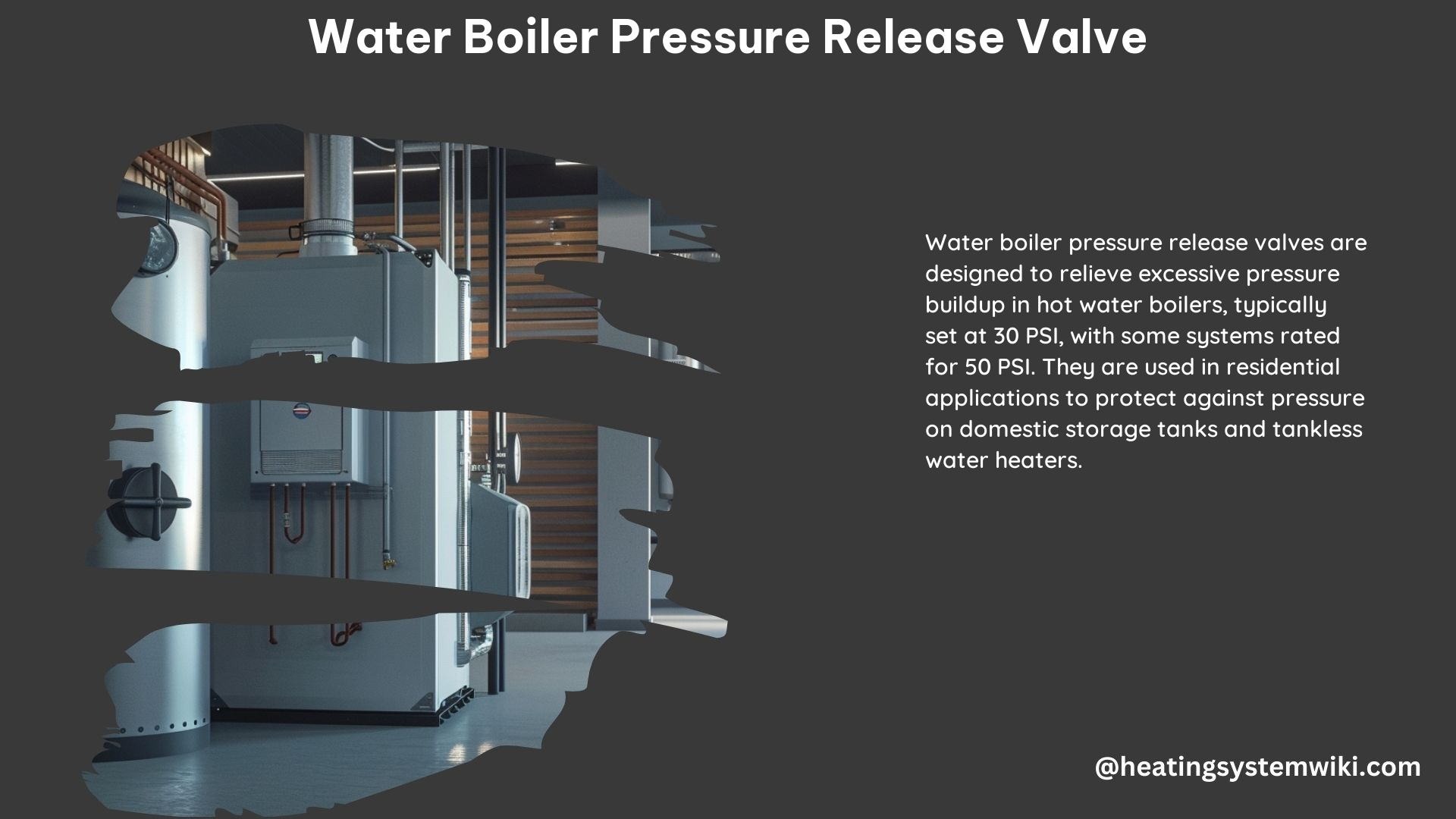A water boiler pressure release valve, also known as a pressure relief valve, is a critical safety component designed to protect hot water boilers from excessive pressure buildup. This valve is typically set to open at a specific pressure, usually between 30 and 50 PSI, to release excess pressure and prevent the boiler from rupturing or causing damage.
Common Causes of a Leaking Boiler Pressure Relief Valve
-
Malfunctioning or Faulty Valve: The valve itself may be faulty or malfunctioning, causing it to leak or release pressure unnecessarily. This can be due to a variety of reasons, such as a worn-out spring, a damaged diaphragm, or a stuck mechanism.
-
Incorrect Installation: Improper installation of the valve can lead to leaks or malfunction. This includes issues like misalignment, overtightening, or using the wrong type of sealant.
-
Corrosion or Wear: Corrosion or wear on the valve’s components, such as the valve seat, the spring, or the body, can cause leaks or affect its performance over time.
-
High Water Pressure: Excessive water pressure in the system, often caused by a malfunctioning pressure-reducing valve or a problem with the water supply, can cause the pressure relief valve to open and release pressure.
-
Temperature Fluctuations: Significant temperature changes in the boiler system can affect the valve’s operation and cause it to leak, as the materials expand and contract.
Troubleshooting and Fixing a Faulty Boiler Pressure Relief Valve

-
Inspect the Valve: Carefully examine the valve for any visible signs of corrosion, wear, or damage. Look for cracks, pitting, or other physical defects that could be causing the leak.
-
Check the Installation: Verify that the valve is installed correctly and in accordance with the manufacturer’s instructions. Ensure that the valve is properly aligned, the connections are tight, and the appropriate sealants or thread compounds have been used.
-
Test the Valve: Perform a pressure test to ensure the valve is functioning correctly. This can be done by using a pressure gauge and a hand pump to gradually increase the pressure until the valve opens. The valve should open at the specified pressure rating.
-
Replace the Valve: If the valve is found to be faulty or beyond repair, it will need to be replaced. Ensure that the replacement valve is of the same size, pressure rating, and material as the original.
-
Adjust the Pressure Setting: If the valve is opening at a pressure that is too low or too high, you may need to adjust the pressure setting. This can typically be done by tightening or loosening the valve’s adjustment nut or screw.
Technical Specification of Water Boiler Pressure Release Valve
-
Material: Boiler pressure relief valves are typically made of brass, bronze, or stainless steel to ensure durability and resistance to corrosion. Brass and bronze are the most common materials, as they offer good corrosion resistance and are relatively affordable.
-
Thread Size: The most common thread sizes for boiler pressure relief valves are 3/4″ NPT (National Pipe Taper) and 1/2″ NPT. The thread size must match the boiler’s connection point to ensure a proper seal.
-
Pressure Rating: Boiler pressure relief valves are typically set to open between 30 and 50 PSI, depending on the specific requirements of the boiler system. The pressure rating is usually stamped on the valve body.
-
Temperature Rating: Boiler pressure relief valves are designed to handle temperatures up to 210°F (99°C), which is the typical operating range for most residential and commercial hot water boilers.
-
Certifications: Boiler pressure relief valves must meet ASME (American Society of Mechanical Engineers) safety standards, as well as any other relevant local or national codes and regulations. Look for valves that are ASME-certified.
DIY Tips
- Always follow the manufacturer’s instructions for the proper installation and maintenance of the boiler pressure relief valve.
- Ensure that the replacement valve is compatible with the specific boiler system, including the thread size, pressure rating, and temperature rating.
- Regularly inspect the valve for signs of wear or damage, and test it periodically to ensure it is functioning correctly.
- When replacing the valve, use the appropriate sealants or thread compounds to ensure a tight, leak-free connection.
- Consider hiring a licensed HVAC technician if you are not comfortable performing the installation or maintenance tasks yourself.
